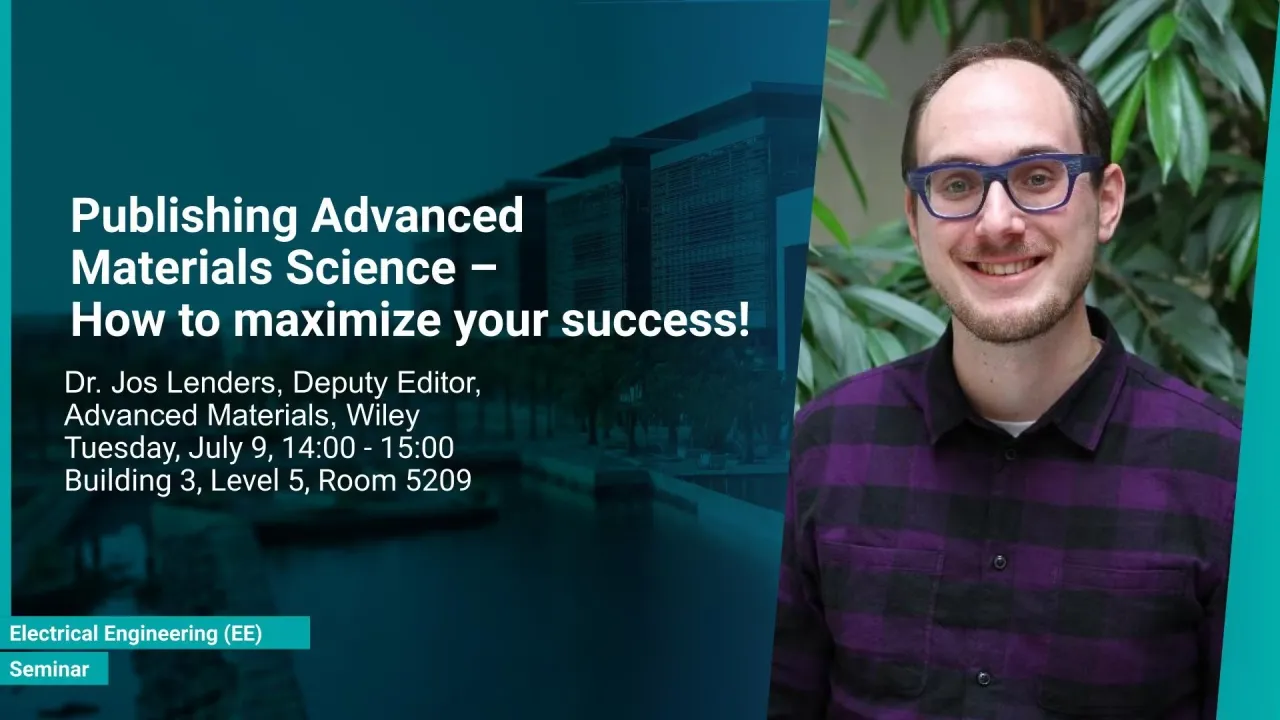
Publishing Advanced Materials Science – How to maximize your success!
Materials science is a multidisciplinary field of research with many different scientists and engineers having various backgrounds active in it. The literature landscape consequently is populated currently by a wide range of journals which greatly differ in purpose, scope, quality, and readership. Jos Lenders, Deputy Editor of Advanced Materials, Advanced Functional Materials, and Advanced Optical Materials, will track some of the most important developments and trends in the research field and the Advanced journals program. Last year, Advanced Materials reached an Impact Factor of 21.95 and received over 8,300 submissions – and Advanced Functional Materials over 9,200. Only around 15% of all those papers made it to publication in the journal, and this rate is similar for all other Advanced journals. So, what do editors do to select the very best papers, and what can authors do to optimize their chances of having their manuscripts accepted?
Overview
Abstract
Materials science is a multidisciplinary field of research with many different scientists and engineers having various backgrounds active in it. The literature landscape consequently is populated currently by a wide range of journals which greatly differ in purpose, scope, quality, and readership.
Jos Lenders, Deputy Editor of Advanced Materials, Advanced Functional Materials, and Advanced Optical Materials, will track some of the most important developments and trends in the research field and the Advanced journals program. Last year, Advanced Materials reached an Impact Factor of 21.95 and received over 8,300 submissions – and Advanced Functional Materials over 9,200. Only around 15% of all those papers made it to publication in the journal, and this rate is similar for all other Advanced journals. So, what do editors do to select the very best papers, and what can authors do to optimize their chances of having their manuscripts accepted?
Jos hopes to provide some insights into these topics. Key aspects are: structuring one’s research work well and assembling a convincing manuscript, understanding the decision processes in editorial offices, choosing an appropriate journal and knowing what to put in the cover letter, and which things to avoid. In addition, the talk will cover the reasoning behind editorial workflows and the peer-review process, publishing ethics and best practices for authors and reviewers, and possibilities for open access. Anybody who is enthused about where the field of advanced materials and its top-level publication will go next is more than welcome to join the talk and discussion.
Brief Biography
Dr. Jos Lenders is Deputy Editor of Advanced Materials, Advanced Functional Materials, and Advanced Optical Materials, and also edits Advanced Therapeutics. He studied chemical engineering with a minor in biomedical engineering and a master in polymers and composites at Eindhoven University of Technology, in the Netherlands. There he obtained his BSc, MSc, and PhD, the latter in the area of bioinspired materials synthesis and electron microscopy. He joined Wiley in 2015.